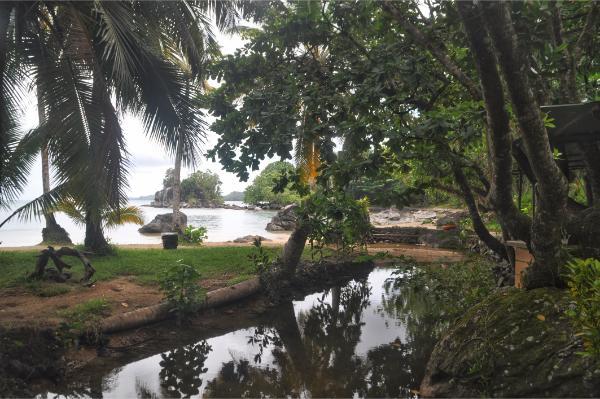Sainte Marie, officially called Nosy Boraha, is a paradisal tropical island off Madagascar’s northeastern coast. We visited it in January-February 2024 and had such an awesome time that we ended up extending our one planned week to three. In this trip report/mini travel guide, I’m sharing my impressions from this trip and some general tips and suggestions.
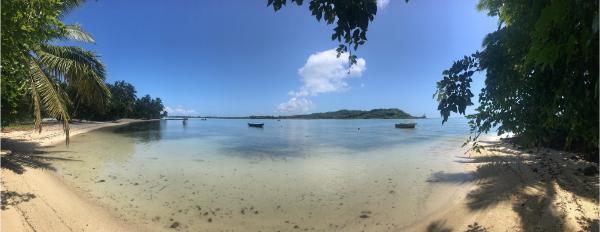
When to visit
Travelers typically visit Sainte Marie in the dry season from June to September, which coincides with the migration of the humpback whales who swim all the way from Antarctica to bear their young in the island’s warm, hospitable waters. As I said, we visited in the winter. The downside was, of course, that we missed the whales. Weather-wise, however, it was alright. It rained quite a lot, but the temperature was just perfect, and we still had plenty of sunny days to go on excursions. The additional benefit of the wet season is that you get fewer tourists and lower prices.
How to get to Sainte Marie
Sainte Marie is connected to the rest of the country via an airport and multiple ferry lines. Flights are rather expensive but a reasonable option if you don’t have the time to undertake the excruciatingly long and tiresome overland journeys across Madagascar. Several companies operate ferries to Sainte Marie from the mainland ports of Toamasina, Mahambo, and Soanierana Ivongo. If you want to come straight from Antananarivo, your quickest overland option is to catch the ferry from Toamasina, which you can reach in a long-day bus trip (alternatively, you may also arrange a faster private transfer here). Ferry routes from Toamasina are daily, should cost around 50–80,000 ariary (depending on the company), and take 8–10 hours.
Since we traveled to Sainte Marie from Mahambo, where we’d spent the previous two weeks, we caught the ferry from Soanierana Ivongo (at the time, there was only one, expensive, weekly direct ferry from Mahambo). After reaching the port in a three-hour taxi-brousse trip, it took 50,000 ariary and 1.5 hours to be conveyed across the strait to Sainte Marie. We traveled with Melissa company, whose agent was very polite and the only one to answer our e-mail inquiry. You can read more details about the trip here.
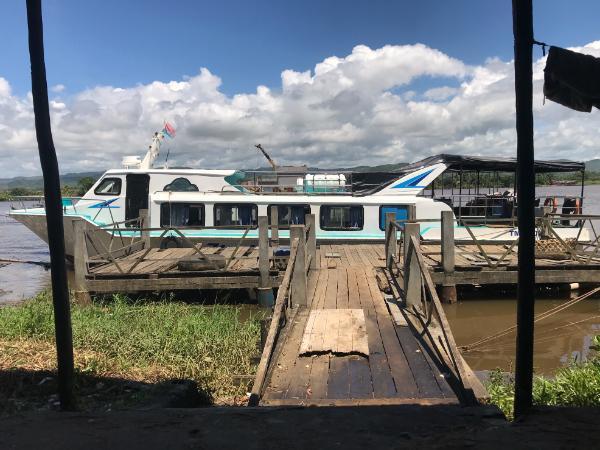
Affiliation disclosure: By purchasing goods or services via the links contained in this post, I may be earning a small commission from the seller's profit, without you being charged any extra penny. You will be thus greatly helping me to maintain and keep enriching this website. Thanks!
Where to stay
Regarding accommodation on Sainte Marie, the main question to ask is “in town or out of town?”.
The best beaches are in the remoter parts of the island. But barring beaches, there isn’t much else out there. The villages are rudimentary and hardly even have an elementary shop. If you’re just after some relaxing holiday time amid heavenly environs, and you don’t mind paying a bit extra and eating at your resort every day and night, you should choose out of town. These are some nice remote resorts we visited for a meal or drink during our trips around the island: Natiora Green Lodge, Boraha Village Ecolodge, Nosy-Borah Holidays, and Ecolodge Le Ravoraha.
On the other hand, if you’re looking for a more economical stay, diverse dining options, and socialization while still being able to conveniently explore the island on day trips, find a place in town. Of course, if you are the restless, always-on-the-go kind of traveler, another option is to tour from lodge to lodge and discover the whole island in the process.
In our case, we opted for a middle solution. We settled in the village of Belle Vue, which is far enough out of town to offer serenity but still close enough (a 5-minute drive or a 20-minute walk) to get to town any time we wished. We chose a lodge called Les Orchidees. For a very fair price, it provided clean, spacious, aptly furnished rooms in a beautiful garden concealed in lush vegetation. It also had a neat lounge and an equipped kitchen. Its Italian owner was very kind and accommodating. He even offered us a free pick-up from the port in his vintage open-air jeep.
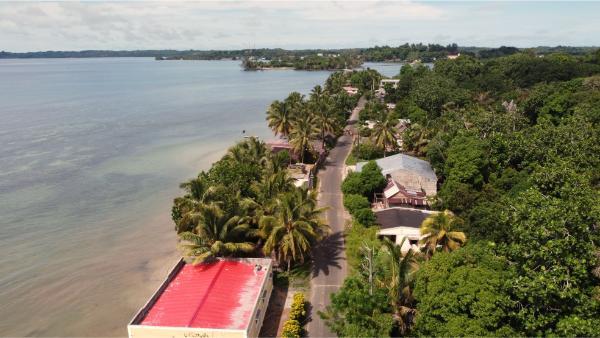
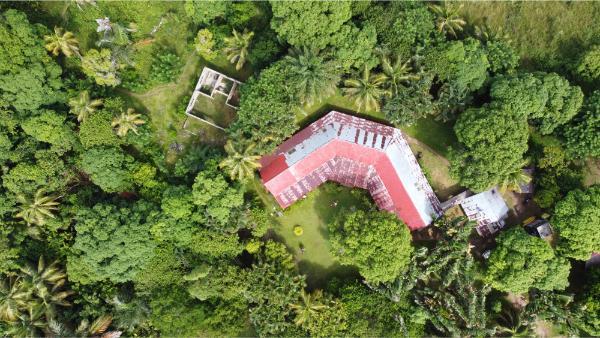
The best thing about the property was Lemur the playful dog. We became best friends. She slept at our door’s threshold every night and followed us everywhere, whether for a walk, a run, or a scooter ride, promptly hopping on the footboard and pushing my knee aside to stick her head out for a better view.
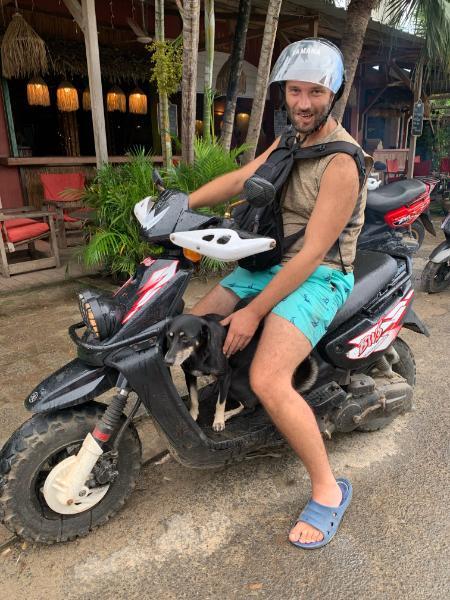
There also were some cats around, but they only showed up when we cooked or ordered a pizza. And just like everywhere on the island, various creatures hung around. Some were welcome, like birds and bright geckos; others unwelcome, most notably a rat that foraged for anything edible we’d forget to put in the fridge at night and whatever insects drilled into my cigarettes. A unique spectacle we witnessed was a giant centipede devouring a poor gecko while hanging off the roof outside of our room.
Our stay in Les Orchidees was nothing short of perfect and I unreservedly recommend it. You can explore more hotels on the practical map below.
What’s in town
The main and only town on Sainte Marie is called Ambodifotatra. The island’s only port, petrol station, two banks/ATMs, and two supermarkets, as well as most hotels and restaurants, are located there. It has a considerable size and a sizable population of locals intermingled with tourists and French retirees. The principal hangout is the Pirates’ Bar; a European-pub-style place with a terrace overlooking the port and cheap beer. Some nice places we visited repeatedly for food and drinks are La Paillote for Italian pizza and all sorts of excellent meals; Pizza Mamasanta for less expensive and as delicious pizza; Mofo Mafana bakery for ice cream; and Crazy Co’Cool for coffee by the sea. There are many good local restaurants and street-food stands around. The bar where locals gather for night-long partying is situated a bit out of town in Belle Vue; you can’t miss it if you drive there.

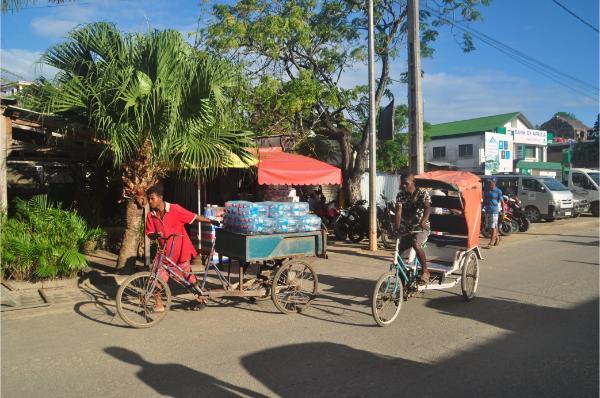
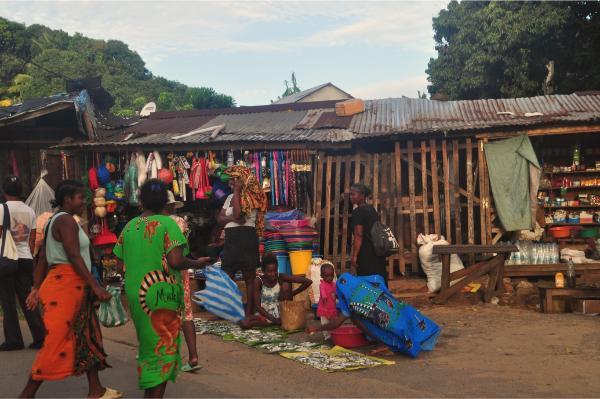
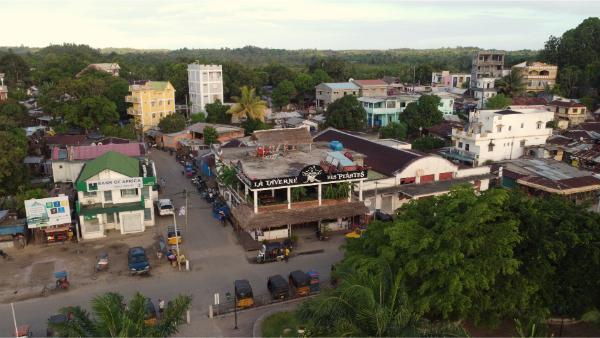
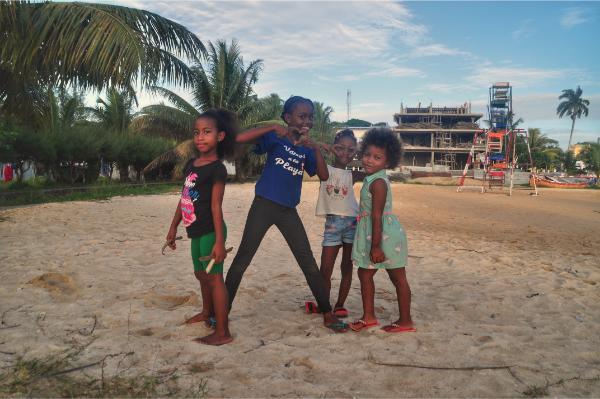
How to get around (better rent a motorbike)
The best way to move around Sainte Marie is to rent a motorbike. Rental shops are available all over the place. The standard price at the time of our visit was 40,000 per day for a scooter and 60,000 for an enduro.
We rented a scooter for our entire stay at a long-term discount of 25,000 per day from a place near the port. The whole instrument panel was out of order, the headlight was dimmer than my phone’s torch, the brakes were practically useless for emergency braking, and the engine was so weak that I had to assist a full throttle with my foot pushing to set the thing in motion, but on the plus side, it had good tires and suspension for off-road driving.
As you’d expect, the roads are sketchy at best and goat tracks at worst. The main road along the island’s western coast is good enough to tackle on a scooter, albeit at minimal speed and with constant bumping. The roads on the east coast and the interior are better negotiated by an enduro. We rented one for one day only to go on a long off-road excursion.
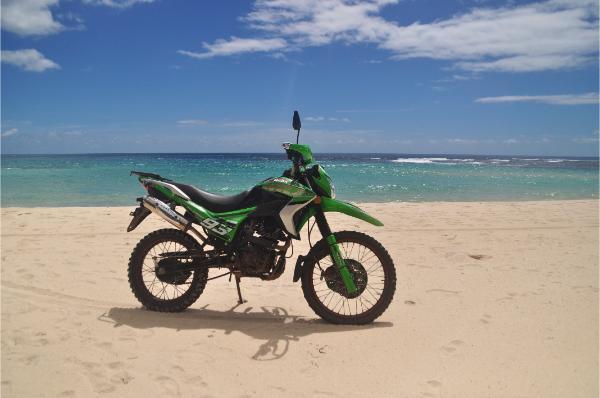
Traffic is rather scarce near the town and virtually nonexistent farther out from it. It almost exclusively consists of bikes and tuk-tuks who drive slowly and carefully as a rule. Hence it’s safe to drive around.
We weren’t even asked for a driver’s license. Motorcyclists rarely wear helmets and the police don’t care. They stopped us only once in a remote location and kindly asked us whether we had some spare change for a drink. They let us go with a smile after we refused.
Cars are also available for rental but are expensive and inconvenient for the local road infrastructure.
If you can’t or don’t want to drive, you can still move around in tuk-tuks. The standard price between our village and the town (2 km) was 10,000 ariary. You can estimate the cost of longer trips accordingly. There is a permanent tuk-tuk rank in front of the park by the port, and you can easily stop one along the main road anywhere within a 10 or so km radius of town. You’ll be better off fixing a regular driver to call up anytime and pre-arrange your trips for lower prices.
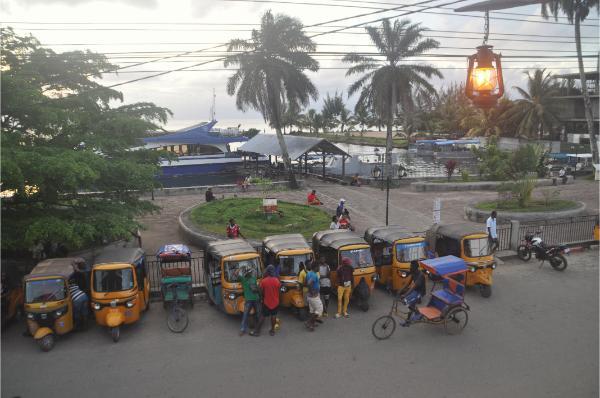
Places to visit on Sainte Marie
Having got our bike, we took advantage of every sunny spell to drive around and explore the entire island. Following are some of the best places we discovered.
Île aux Nattes (Nosy Natto)
By far, the most beautiful place we visited on Sainte Marie was Île aux Nattes, officially but uncolloquially called Nosy Nato. This is the small island off the south tip of the main island, and it is the absolute stereotype of a tropical paradise.
Early in the morning, we drove south until the road ended before the 50-meter-wide strait. A little fleet of pirogues was there, facilitating commuting between the two islands. There was also a little fenced parking lot for scooters, but we just left ours outside for free (it’s not as if space is lacking or thieves abound). The trip cost 5,000 per person each way and lasted a couple of minutes.
We then spent the entire day on Île aux Nattes, walking from beach to beach and through the engulfed-in-green, mazing paths of the interior all around the island. We went to a graceful place called La Buvette on the east coast for coffee and a swim, to the highest peak with its picturesque lighthouse for a panoramic view, and to a little local place by Les Lemuriens resort on the south coast for a meal. We’d have loved to fly our drone, too, and tried to several times, but the entire island lay within the airport’s restriction zone.
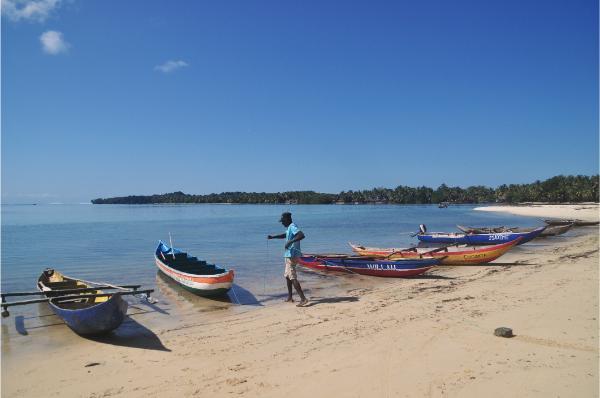
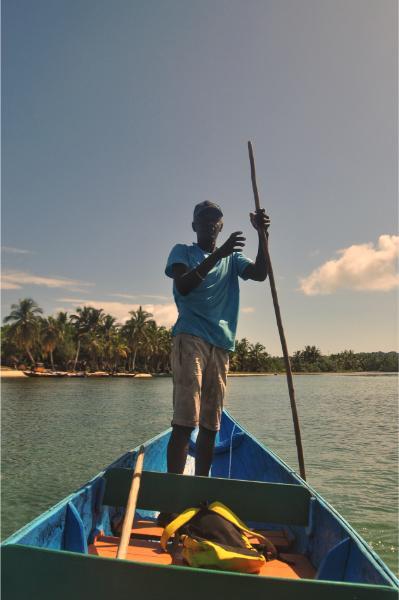
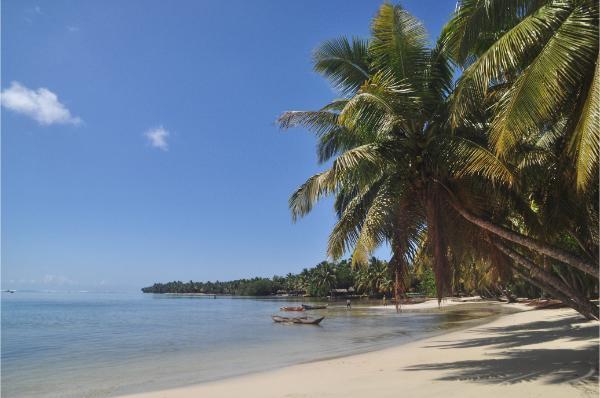
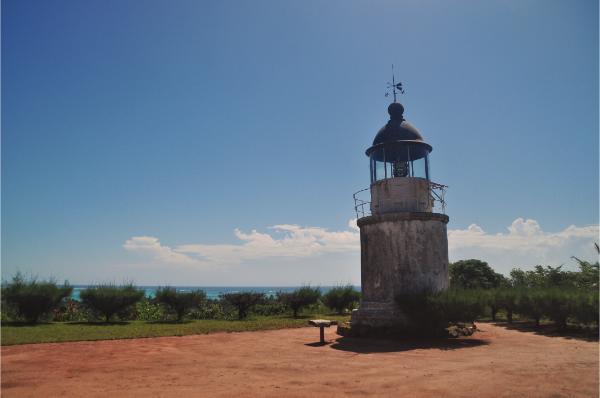
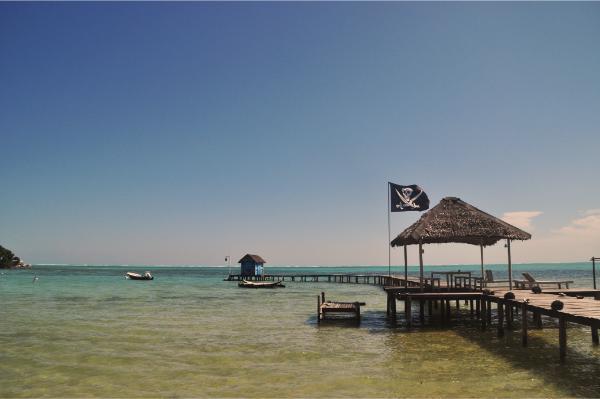
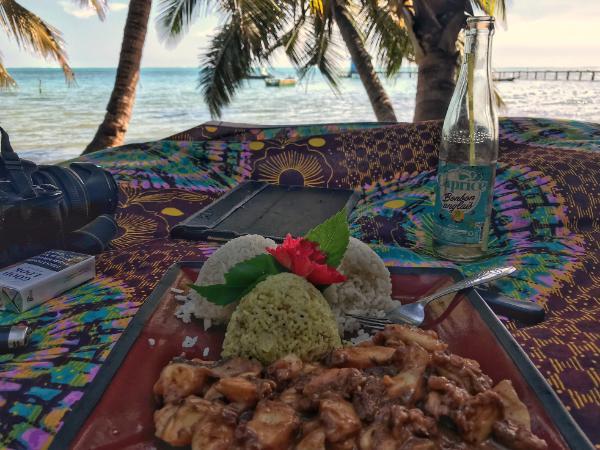
Ambodiatafana & Sahasifotra
Our second whole-day trip was to the far north of Sainte Marie. This was when we rented a 250cc enduro to live up to the task. But as it turned out, it wasn’t indispensable. After Lokintsy, the road was excellent. Although narrow, it hardly had a single pothole and was totally empty; we encountered but a single scooter.
Anyhow, we still made good use of the enduro bike by combining the trip to the north with the central-west coast. We took a route through the hinterland from the village of Analarajy; a stunning drive over the hills. The path, at certain steep points, had formed slides. It was so slippery I could barely get traction with my trekking boots, let alone the bike tire. Going up, I had to dismount and push it on foot from the side together with the throttle, striving to remain upright. At the steepest part, a passing grandpa stopped and lent me a hand. Going down, I had to again get off and skid it with the engine off, first gear in, front brake pressed, and Sophie also holding from the rack. The whole operation was exhausting, but we made it through and it was rewarding.
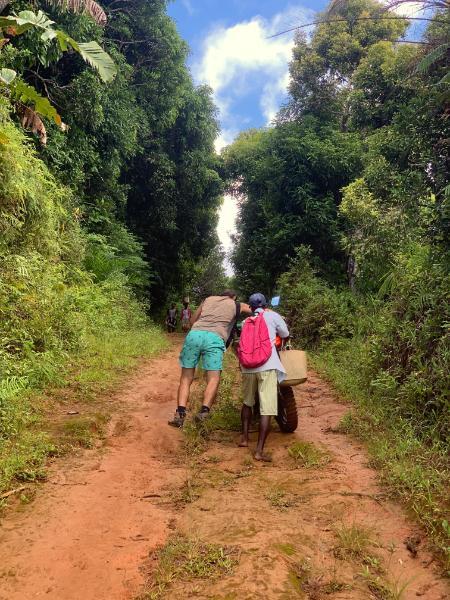
We ended up at a majestic beach near Sahasifotra village. A long, wide expanse of sand adjoined by clear, deep sea, this was the best beach we spotted anywhere on Sainte Marie. In the 2–3 hours we spent there, we only saw three fishermen.
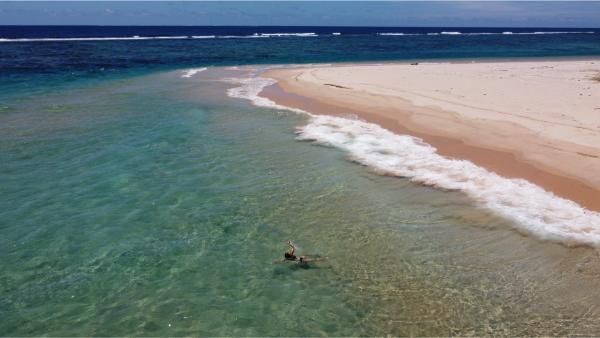
We then got back on the main road and carried on to Ambodiatafana village. A group of locals waited for us at the approach to the beach. One was a guide who insisted we must hire him because the site is sacred. We declined, and he showed us a list of rules we must respect: no shoes, no alcohol, no pork, and such Muslim stuff. I didn’t check it up, but I assumed this might have been where the first Muslim missionary had landed. Two other guys were touting for the two local restaurants and followed us with menus in hand. We had to choose between them where the path forked to their respective restaurants. They were both so keen; I felt sad to break the one’s heart.
After food, we took a stroll along the beach of Ambodiatafana and its so-called natural pools. These were basically parts of the sea separated from the ocean by a peculiar granite formation off the coast. Quite a unique spectacle. At the northern end of the beach, there was a cute sequestered lodge that would have made for an idyllic stay.
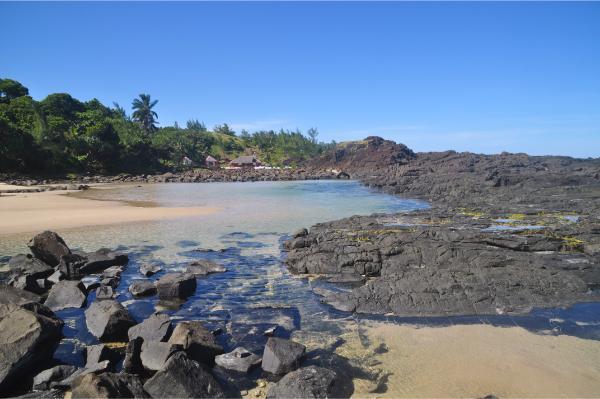
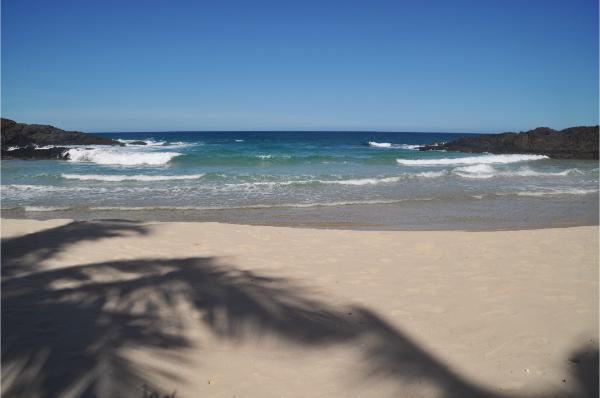
Lokintsy
Another place we really enjoyed visiting was the Natiora Green Lodge, located in a secluded little bay near the village of Lokintsy. The bay was strewn with bluffs in a way that made it reminiscent of Southeast Asia, and the sea was clear, deep, and calm, ideal for swimming. The lodge, nestled under impenetrable foliage of gigantic trees, resembled the setting of a fairy tale. We settled there for several hours over coffee and lunch, and then we went on a short coastal hike to the adjacent bays. On the way to Lokintsy, we also stopped at a lovely waterfall, situated right beside the road shortly before Hotel Atafana. A deep pool was formed at its base, where we’d have had a dip if it wasn’t too early to freeze.
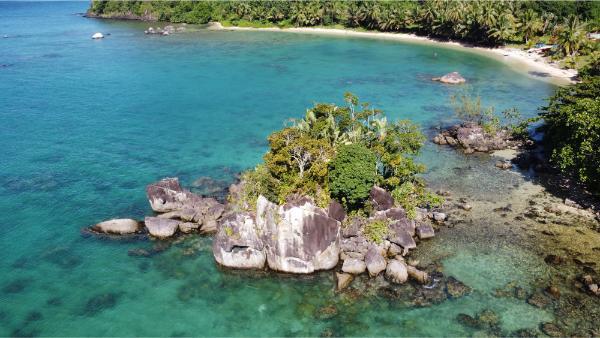
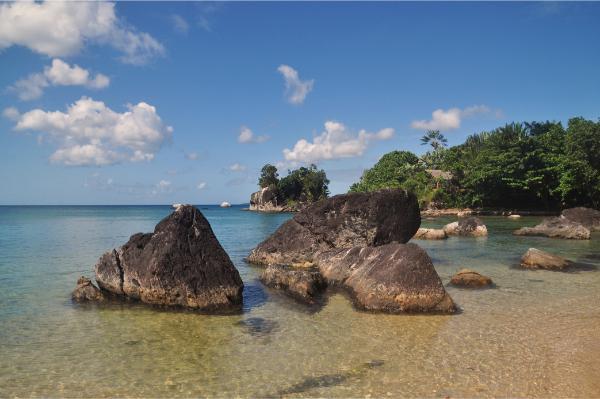
Ravoraha
This is the southernmost village of Sainte Marie’s main island, near the airport, across Île aux Nattes. There were some nice beaches around, local restaurants, and several resorts. We visited the Ravoraha Ecolodge for lunch and a swim.
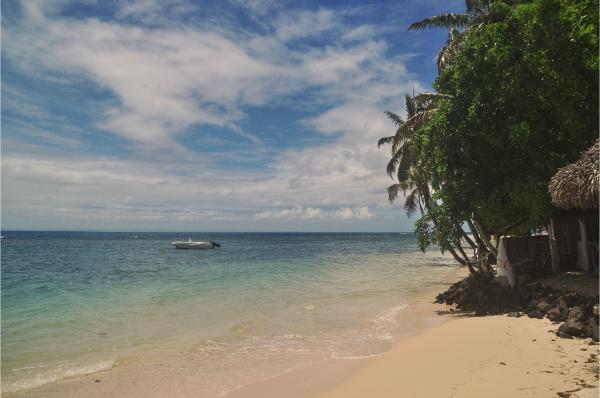
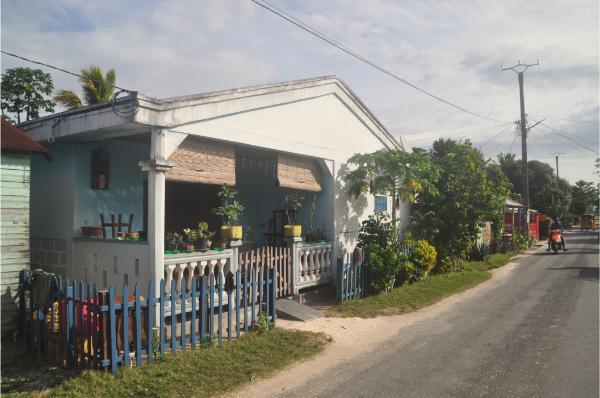
Ilampy
This is a tiny settlement on the east coast across the island from the town. We got there following the road inlandward from Ambodifotatra. It was rough but tackleable by our scooter. Nothing special was there; not a lodge, not a restaurant, not an appropriate beach for swimming. But the route was really scenic with some spectacular views of a massive wave break in the oceanic distance.
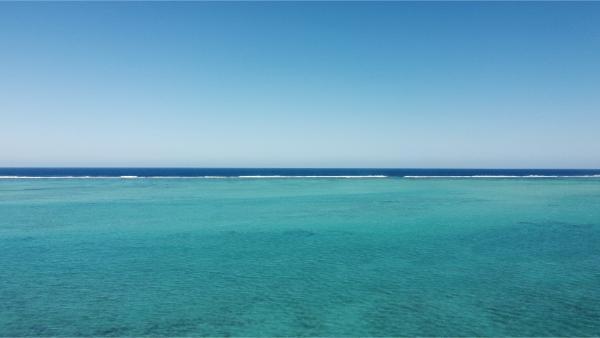
Madame Island & Sainte Marie Lagoon
Just south of town, there is a lagoon whose mouth is spanned by a causeway bridge via the funnily named islet of Madame. We drove past at least once a day on our way between home and town, aptly enjoying the view of the bilateral bodies of water. The islet hosts Sainte Marie’s commercial port, which seemed abandoned, and a high school, which turned it into a favorite hangout of students. Another little islet amid the lagoon is called the forbidden island, but that did not forbid the disembarkation of whoever had built a tall, observation-deck-looking structure that stood on it.
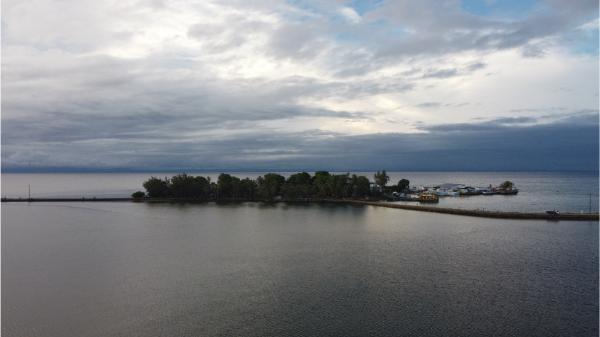
On the lagoon’s southern shore, there is a pirate cemetery, apparently the island’s most renowned sight. We didn’t visit it because we found the 35,000 ariary ticket ludicrously expensive—I mean, I paid less to visit the frigging Pyramids of Giza; I doubt a bunch of freebooters afforded more impressive graves than the Pharaohs. Alternatively, we checked out the contemporary graveyard by the spooky church on the lagoon’s northern shore.
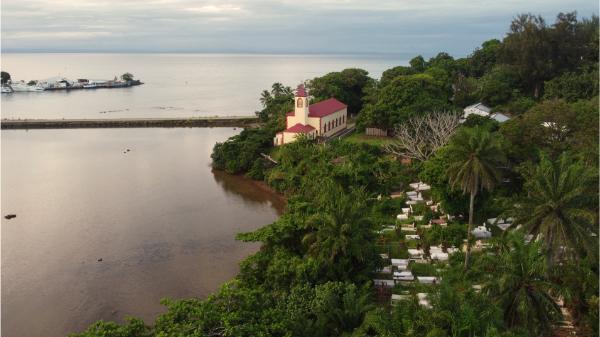
Accommodation and Activities in Madagascar
Stay22 is a handy tool that lets you search for and compare stays and experiences across multiple platforms on the same neat, interactive map. Hover over the listings to see the details. Click on the top-right settings icon to adjust your preferences; switch between hotels, experiences, or restaurants; and activate clever map overlays displaying information like transit lines or concentrations of sights. Click on the Show List button for the listings to appear in a list format. Booking via this map, I will be earning a small cut of the platform's profit without you being charged any extra penny. You will be thus greatly helping me to maintain and keep enriching this website. Thanks!
